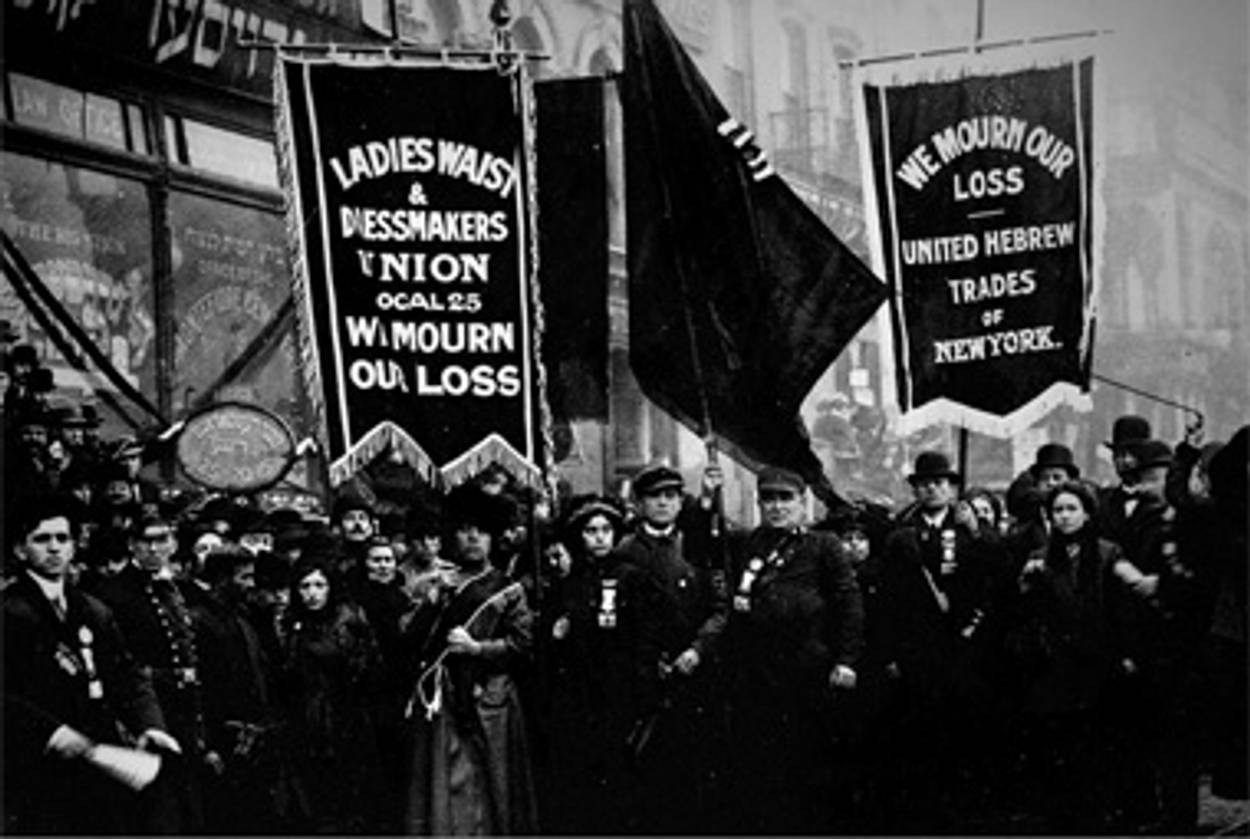Documentary Honors Dead with Political Touch
HBO’s ‘Triangle: Remembering the Fire’ airs tonight




You could smell pork—turned out to be dates wrapped with bacon—during the hors d’œuvres portion of the screening last week for HBO’s documentary Triangle: Remembering the Fire, which premieres tonight at 9. There were also oysters, whose brine you could catch a whiff of if you got close enough, as though the ecumenicism—or, rather, nod to common tastes; I am being ethnocentric—were deliberate and pronounced. But if the bulk of the attendees (those who had ancestors wore badges bearing the names of the perished) and people involved in the making of the film did appear to be Jewish, much as the bulk of (though by no means all) the 146 victims, mostly young women, of the March 25, 1911, fire were as well, the event and the documentary conveyed what the fire really, ultimately was: An unmistakably American tragedy.
At the event, the filmmakers were unafraid to make very, very clear the connection between then and now, particularly with labor unrest back in the news, in Wisconsin and elsewhere. “Literally 100 years of progress for working and middle-class people, and it’s under assault and we can’t figure out the right way to go forward until we go back,” said one of the filmmakers. The film is better at being more understated about this, with the strongest statement coming from a labor historian: “If people want to know what deregulated industries would be like, take a look at the burned bodies.” Exactly: The documentary largely shows rather than tells, and its implicit political message is therefore more effective. By contrast, the most politically powerful thing at the event was the reading of the names of the six previously unknown victims, who had not been identified until historian Michael Hirsch recently did the legwork. They included at least one man; two whose surnames implied that they hailed from the boot rather than the Pale; and, finally, a Jewish girl from Kiev for whom March 25, 2011, was her third day on the job at the factory.
The documentary is worth your time! Partly because, in a wise move, it won’t require too much of it: The thing clocks in at barely over 40 minutes. If you expect sad violins, you will not be disappointed. If you expect Tovah Feldshuh to be the narrator, you will not be disappointed. It straightforwardly tells the story, with old photographs combined with talking heads: Mostly victims’ descendants, with a couple academic-types thrown in. Most provocatively and helpfully of all, the granddaughter of one of the two owners of the company, Max Blanck and Isaac Harris (they don’t tell you which, presumably because she did not want it disclosed), speaks in the film. Blanck and Harris were of course Jews, in many ways a model for the immigrant Eastern European Jewish community even as their lax safety policies—not just the famously allegedly locked doors, but the absence of a feasible evacuation plan—led to the death of many in their community (though, as I say, you will be surprised, if you have been fed the narrative of the fire as a primarily Jewish catastrophe, at the sizable Italian Catholic minority of the victims). They were quickly acquitted of wrongdoing at the time. As the granddaughter tells us, she cannot help but be happy that neither had to go to jail. But had she instead been the descendant of one of the victims, as it was purely her great good fortune not to be? “I probably would’ve shot him.”
Perhaps the most powerful feature of the event was its location: In a New York University building off Washington Square, literally around the corner from what used to be called the Asch Building, the site of the fire itself. After departing, I walked over to the façade that I recognized from the film. The park, to my left, was still there, still a damp green oasis amidst the city. And nine stories up still seemed a terrifying height for people to jump from.
Triangle: Remembering the Fire [HBO]
100 Years Later, the Roll of the Dead in Factory Fire Is Complete [NYT]
Marc Tracy is a staff writer at The New Republic, and was previously a staff writer at Tablet. He tweets @marcatracy.